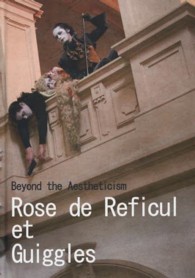基本説明
「アニマシー」とは、我々がある生き物・人間に対し、どれ程強く、魂を持った生き物らしい或は人間らしい存在としてとらえ、そして表現するかという根源的な問題である。本書には二つの目的がある。まず、アニマシーの概念的枠組を確立すること。そして、アニマシーが如何に人称指示表現の中に反映しているか、を探ることである。この二つ目の目的のために、日本語と英語のパラレル・コーパスの分析を行い、両言語がアニマシーの顕現に関し、非常に対称的な性格をもつことを統計的に説明した。(山本睦)
Full Description
The concept of 'animacy' concerns the fundamental and cognitive question of the extent to which we recognize and express living things as saliently human-like or animal-like.
In Animacy and Reference Mutsumi Yamamoto pursues two main objectives: First, to establish a conceptual framework of animacy, and secondly, to explain how the concept of animacy can be reflected in the use of referential expressions. Unlike previous studies on the subject focussing on grammatical manifestations, Animacy and Reference sheds light upon the conceptual properties of animacy itself and its reflection in referential processes.
For the research of this study the author focussed on languages that show completely different tendencies. As a result, English and Japanese 'parallel corpora' are analysed yielding salient observations and opening intriguing discussions.
Contents
1. Acknowledgments; 2. List of Abbreviations; 3. List of Tables; 4. List of Figures; 5. Introduction; 6. A. The General Animacy Scale; 7. B. The Hierarchy of Persons; 8. C. The Individuation Scale; 9. D. Semantic Roles; 10. E. Politeness; 11. Chapter 1: What is 'Animacy'?; 12. 1.1 General Animacy Scale: Humanness, Animacy and Inanimacy; 13. 1.2 Models of the 'Animacy Hierarchy' and Degree of Animacy within Human Category: with Reference to the Hierarchy of Persons and the Individuation Scale; 14. 1.3 Concluding Remarks; 15. Chapter 2: What Does Animacy Do to Human Language?; 16. 2.1 Overview: With Reference to Number Distinction; 17. 2.2 Case Marking; 18. 2.3 Word Order; 19. 2.4 Subject Selection; 20. 2.5 Topicality; 21. 2.6 Towards a Generalisation: 'Mind-style' and Structural Salience of Animacy; 22. 2.7 Concluding Remarks; 23. Chapter 3: Hierarchy of Persons and Animacy in English and Japanese; 24. 3.1 Overview; 25. 3.2 Some Remarks on the Pragmatic Characteristics of the Hierarchy of Persons; 26. 3.3 The Japanese Person System; 27. 3.4 Corpus Analysis and Treatment of Noun Phrases in Texts; 28. 3.5 First Person; 29. 3.6 Second Person; 30. 3.7 Third Person; 31. 3.8 Concluding Remarks; 32. Chapter 4: Degree of Individuation and Encoding of Animacy; 33. 4.1 Overview; 34. 4.2 Persons as Individuals vs. Persons as Roles; 35. 4.3 Organisations: Borderline Cases between Animate and Inanimate Beings; 36. 4.4 Concluding Remarks; 37. Chapter 5: Agency and Animacy; 38. 5.1 Overview; 39. 5.2 Agency; 40. 5.3 Expression and Suppression of Agency and Animacy; 41. 5.4 Concluding Remarks; 42. Chapter 6: A Neverending Story of Animacy; 43. 6.1 A Neverending Story of Animacy; 44. 6.2 Concluding Summary - Contribution to Linguistics; 45. References; 46. Appendix: Lists of Human/Animate Noun Phrases in Corpus; 47. Case Study 1: Yukio Mishima, Hyaku-man Yen Senbei ('One Million Yen Rice Cracker' or 'Three Million Yen'); 48. Case Study 2: Agatha Christie, Murder on the Orient Express; 49. Case Study 3: Asahi Shinbun and Asahi Evening News; 50. Case Study 4: Newsweek; 51. Case Study 5: The Transactions of the Institute of Electronics, Information and Communication Engineers and Systems and Computers in Japan; 52. Case Study 6: Scientific American; 53. Case Study 7: 'Tetsuko no Heya'; 54. Case Study 8: Viewpoints; 55. Index







